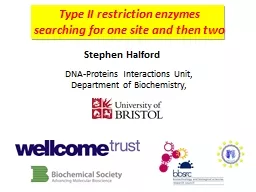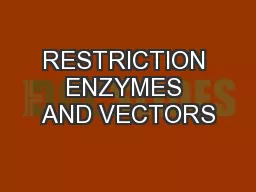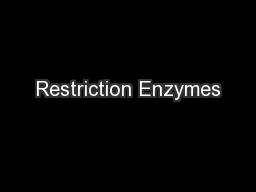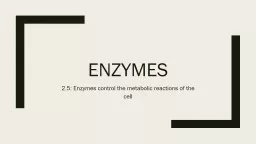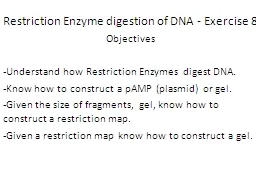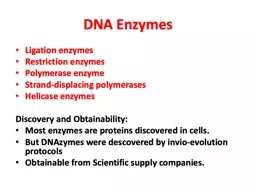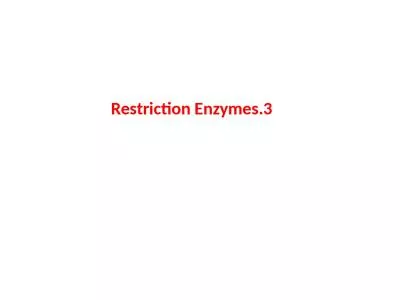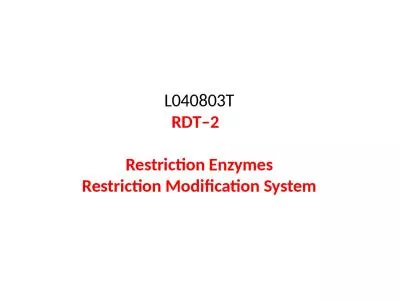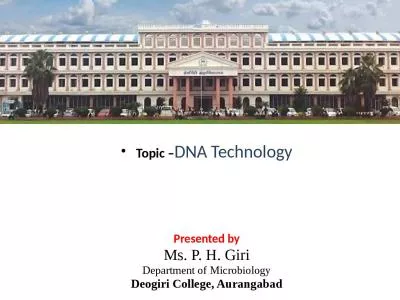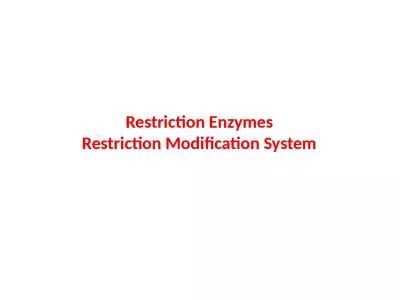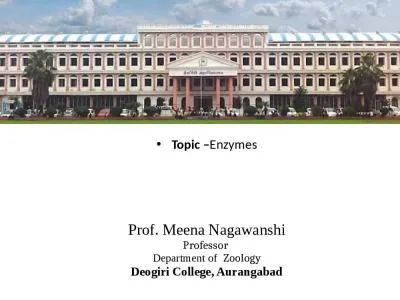PPT-Type II restriction enzymes searching for one site and then
Author : natalia-silvester | Published Date : 2016-07-07
Stephen Halford DNAProteins Interactions Unit Department of Biochemistry Why study the enzymology of Type II restriction enzymes Enzyme specificity cf aminoacyl
Presentation Embed Code
Download Presentation
Download Presentation The PPT/PDF document "Type II restriction enzymes searching fo..." is the property of its rightful owner. Permission is granted to download and print the materials on this website for personal, non-commercial use only, and to display it on your personal computer provided you do not modify the materials and that you retain all copyright notices contained in the materials. By downloading content from our website, you accept the terms of this agreement.
Type II restriction enzymes searching for one site and then: Transcript
Download Rules Of Document
"Type II restriction enzymes searching for one site and then"The content belongs to its owner. You may download and print it for personal use, without modification, and keep all copyright notices. By downloading, you agree to these terms.
Related Documents

